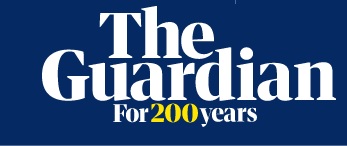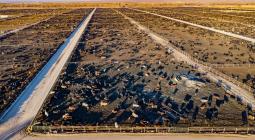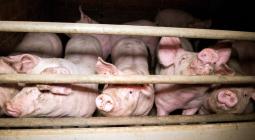The case for paying ranchers to raise trees instead of cattle

Reducing cattle populations and restoring native ecoystems is our best chance to tackle global heating. Here’s one way to do it
There is a simple, cost-effective and scientifically sound way to turn back the clock on global warming and reverse the catastrophic collapse of biodiversity: pay ranchers to raise trees instead of cattle.
By mass, the world’s 1.7 billion cows are the dominant animal species on Earth, far outweighing the human population, and outweighing all the wild terrestrial mammals, birds, reptiles and amphibians left on Earth by more than 15-fold. More than a third of Earth’s land is used to feed livestock.
Winding down the cattle population and restoring the native ecosystems that once thrived on the vast land area now dominated by cows is our best chance to rapidly reduce global heating and begin to reverse the collapse of global biodiversity and wildlife.
Although many people are aware that reducing consumption of animal products would help combat the climate crisis, the size of the effect is deeply underappreciated. Our peer-reviewed research estimated the climate impact of reduced emissions from livestock and recovery of plant biomass on the land they occupy. It showed that a global phaseout of animal agriculture over 15 years would unlock “negative emissions” sufficient to bring about an urgently needed 30-year window of “net-zero” greenhouse gas emissions – even if all other emissions continued on their current trajectory.
Such a phaseout would offset more than two-thirds of all projected carbon dioxide emissions over the next 80 years, and provide more than half of the net emissions reductions required to keep global temperatures from exceeding 2C above pre-industrial levels.
About half of the climate benefits of this phaseout would come from a drastic reduction in emissions of two highly potent greenhouse gases, methane and nitrous oxide – by one-third and two-thirds respectively. The rest would be achieved by the capture of enormous volumes of carbon dioxide from the atmosphere, using the best, cheapest, “greenest”, most scalable carbon capture technology on Earth – photosynthesis – proven over 3.5bn years, as forests and native grasslands recover on the land now used to feed or graze livestock. And the overwhelming majority of these benefits would come just from curtailing cattle production.
The benefits would extend beyond the climate crisis. Around the world, across the gamut of species, populations of wild mammals, birds, reptiles, amphibians, fish and even flying insects have been falling precipitously; today they average less than a third of their numbers just 50 years ago. Habitat loss due to expanding production of livestock, primarily cattle, is the biggest driver of this collapse. Restoring native ecosystems on cattle-grazing land would enable essential habitats for threatened plant and animal species to recover and expand.
So what is stopping us from turning back the clock on the climate crisis and environmental degradation? We do not need to raise cattle. Beef and milk account for less than 13% of the world’s protein supply. Current global production of just one of the world’s diverse plant crops – soybeans – yields more than twice as much high-quality protein as the entire global meat supply. Beef consumption is already declining; since its peak in the mid-70s, per capita beef consumption has dropped by more than 20% globally and more than 35% in the US. Evidence suggests that this trend will continue – the sharpest declines in the past two decades are among the youngest groups.
Raising cattle is far from lucrative, even in wealthy economies where demand for beef is high. The agriculture department confirmed this month that US beef farmers and ranchers are in dire economic straits. For all their hard, dangerous work, 70% lose money and, excluding government support, their average net income per acre was less than 50 cents. In the European Union, member governments provide more than 100% of beef farmers’ income, even covering losses. And things will only worsen for those farmers, what with rising temperatures, changing weather patterns and water shortages.
But farmers and ranchers don’t need to be victims of a changing world; they can instead be the heroes who save us from the two greatest threats facing our planet and our species. All it would take would be to recognize that restoration and stewardship of natural ecosystems that fight the climate crisis and support wildlife is an agricultural occupation essential to our welfare and security, and to adapt agricultural policies toward supporting farmers who choose to ranch carbon instead of cattle.
Economists’ estimates of the annual investment in renewable energy systems required to achieve net zero emissions by 2050 range from $3.5tn to more than $9tn a year. And the cost of not doing anything would be much higher. A systematic analysis by the reinsurance firm Swiss Re projects the annual cost to the global economy of our current climate trajectory could exceed $23tn a year by 2050.
A far smaller global annual investment of just 1% of the world’s GDP – around $1tn – to pay farmers who choose to transition from cattle husbandry to restoration and management of native forests and grasslands would significantly raise the income of cattle farmers and stimulate rural communities, while rapidly reducing global warming and reversing the global collapse of biodiversity. And that would be a bargain.
We could begin with a voluntary pilot program to see what this strategy can deliver for farmers and the environment. Most developed countries have well-established systems for both governmental support of farmers and monitoring of agricultural activity, providing a strong starting point for implementation and validation. Fierce opposition from powerful interests is inevitable; realizing this opportunity will require extraordinary political courage and diplomacy. Our responsibility to future generations demands that we find it.
Cover photo: ‘Farmers and ranchers don’t need to be victims of a changing world; they can instead be the heroes who save us from the two greatest threats facing our planet.’ Photograph: Nati Harnik/AP





